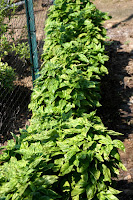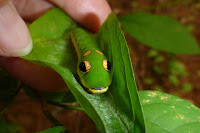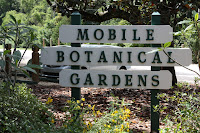Basil Season in the Garden

This is the year for basil in our garden. Each year it's something else. The eggplant year, the cucumber variety year - well, it's enough to say that every year we have a big mess of something to deal with. We donate any vegetables that become too abundant for us to use. Back to Basil - I planted 3 seed varieties with the goal of having enough to make plenty of pesto plus a winter's worth to dry in the dehydrator. We have enough to do it all. Here's the post about the Basil varieties I planted this year. http://allthedirtongardening.blogspot.com/2015/05/globe-basil-is-ocimum-basilicum.html There are four rows of plants in three locations around the place. So far, we've made one batch of pesto and filled the dehydrator once. Then, I watered and lightly fertilized the bottom halves of the plants with seaweed/fish fertilizer and continued to water the plants regularly. Now, as you can see, it's time to harvest again. This winter we will have enough of...






